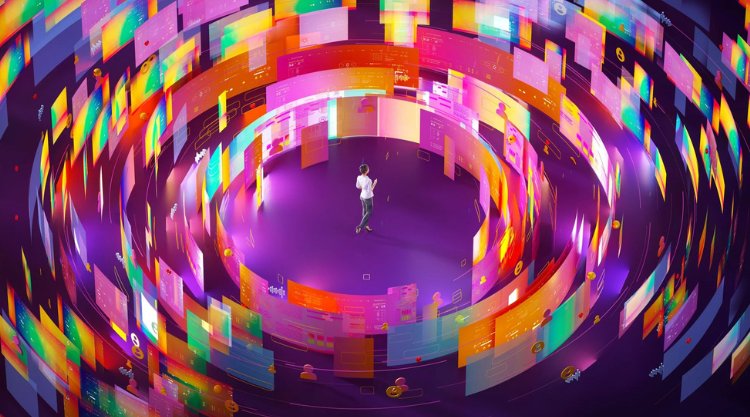The narrative around AI and publishing has been dominated by disruption fears. But exclusive new data from PubMatic’s analysis tells a different story: savvy publishers aren’t just surviving the AI revolution, they’re using it to unlock entirely new audience growth.
Our analysis of traffic patterns across 10,000 publisher sites from SimilarWeb reveals which content categories are successfully capturing AI-driven discovery, and the commercial opportunity is bigger than most realize.
The Billion Dollar Question: When Does AI Drive Revenue?
Here’s the data point that should grab every publisher’s attention: the share of commercial intent on AI platforms is growing 1% each month, reaching almost 10% today, impacting almost 2 billion monthly queries. While 90% of AI interactions remain informational—questions like “how does inflation work?” or “what is the healthiest diet?”—that growing 10% represents something unprecedented: AI platforms evolving from answer engines to transaction facilitators.
Five Categories Leading AI Referral Traffic
While the industry debates AI’s impact, five publisher categories have already secured dominant positions in the new discovery economy:
- News and Media
- Arts & Entertainment
- Science and Education
- Consumer Electronics
- eCommerce
This isn’t random. Each category offers something AI platforms need: authoritative information that users trust when making decisions. The common thread? They’ve become essential stops in AI-mediated consumer journeys.
The Winners: The Growth Stories
The data reveals three distinct success patterns emerging:
- The Accelerators: eCommerce retailer sites1 are seeing some of the highest gains, with a collective, incremental 118 million monthly visitor boost year-over-year in July 2025 alone. They also sit at the center of the AI revolution and command a massive share of total web traffic. Apparel retailers specifically grew 10% in the same period – these publishers have cracked the code on AI-driven product discovery.
- The Resilients: Travel & Tourism and Vehicles categories have held steady year-over-year despite massive industry shifts, proving that experience-driven content has natural staying power in an AI world.
- The Steady Climbers: Dining & Nightlife publishers grew 3% year-over-year, suggesting that local, experiential content continues to drive engagement even as discovery methods evolve.
What This Means: The New Publisher Playbook
The emerging pattern is clear: publishers who understand their role in AI-mediated decision-making are building sustainable competitive advantages. Whether it’s helping users compare products, discover experiences, or understand complex topics, successful publishers are positioning themselves as essential partners in AI-driven consumer journeys.
The opportunity extends beyond traffic. As commercial intent grows quarterly on AI platforms, publishers who establish strong AI discovery relationships now will capture disproportionate value as these platforms mature into full-fledged commerce environments.
The Billion-Dollar Bet
Industry leaders are already making moves. Every major AI platform is experimenting with commerce features, affiliate partnerships, and direct transaction capabilities. The publishers succeeding today aren’t just earning traffic; they’re securing their place in tomorrow’s AI-commerce ecosystem.
The question isn’t whether AI will disrupt traditional discovery. It already has. The question is which publishers will emerge as the trusted content partners that AI platforms, and their users, can’t do without.
For an industry that’s faced wave after wave of platform changes, the AI shift represents something different: a chance to build direct, valuable relationships with the next generation of discovery platforms. The early winners are already staking their claims.
1 In this study, eCommerce retailers span five key categories: Apparel, Beauty, General Retail & Merchandise, Hobbies & Leisure, and Home & Garden.





